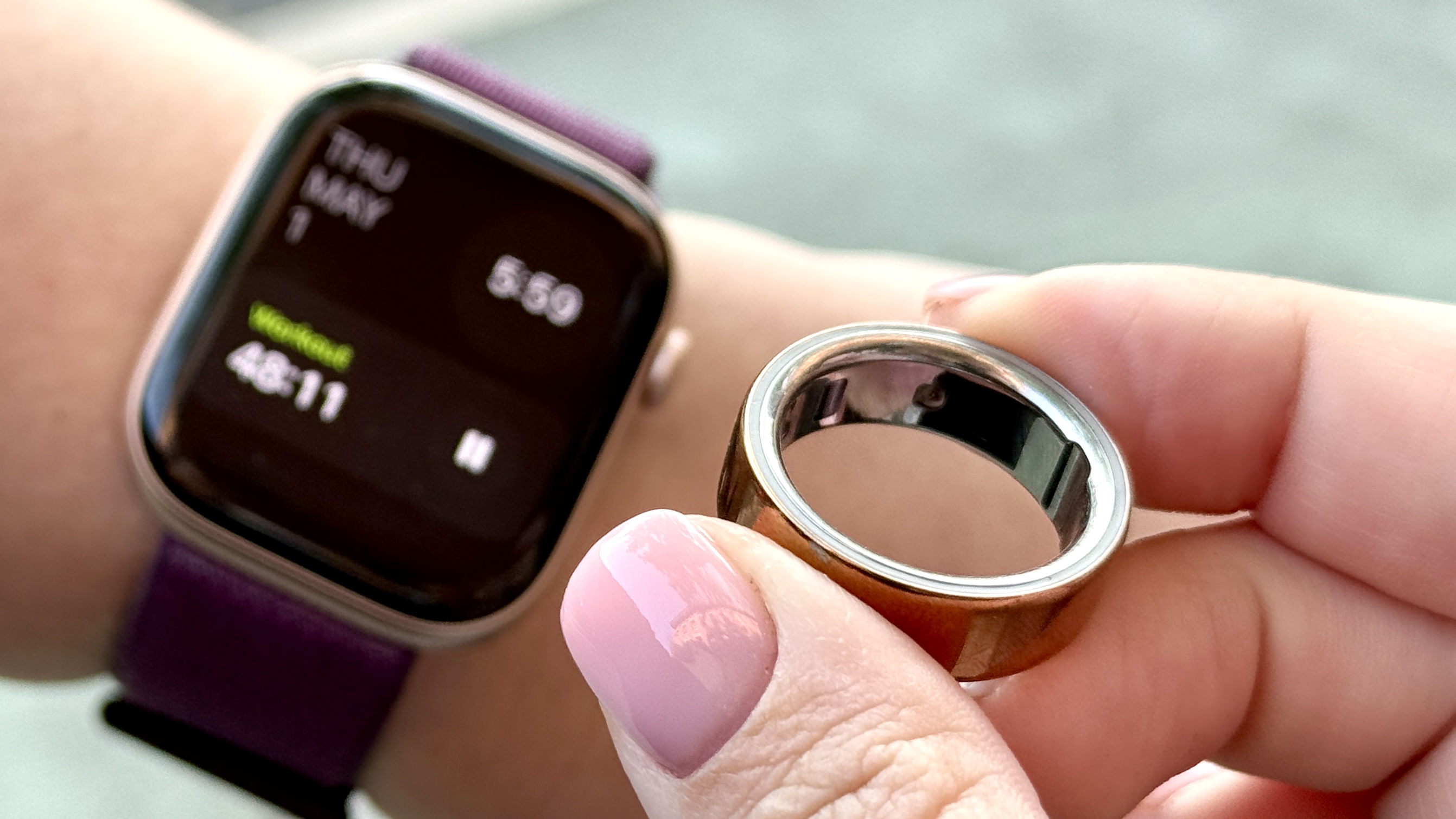It feels absurd for me to say that I went a whole month without my Apple Watch. If you know me, or even if you’ve just followed my work, you probably know the Apple Watch isn’t some accessory to me — practically part of my identity.
So deciding to lock my Apple Watch Series 10 away and wear only an Oura Ring for a month felt… weird, to say the least. But having enjoyed testing out the Oura Ring 4 for the last couple of months, I was curious whether it can fulfill my wearable needs. Stress tracking, in particular, is a huge priority for me right now, and the Oura Ring is packed with comprehensive, science-backed insights.
To really understand the trade-offs between the best smartwatch and best smart ring, and because I know most people would realistically pick one or the other, I went all in. No Apple Watch, just the Oura Ring: this is how it all went down.
The Oura Ring is a *totally* different vibe
I think the Oura Ring is as gorgeous as a fitness tracker can get. I picked the rose gold version, and it fits in perfectly with my other jewelry (rings, bracelets, earrings, you name it.) Unlike a smartwatch, it’s not in your face as much. It’s discreet, elegant, and completely ambient.
For the first few days, I loved this low-profile vibe. It almost felt like a tech detox, as though I was re-learning how to just exist without being hyper-connected every second. Dare I say it was peaceful.
But this feeling didn’t last forever. By about a week into this little experiment of mine, I started to miss the sheer utility of having a display on my wrist. I missed glancing down mid-walk to see my distance and heart rate. I missed being able to check the weather quickly. I even missed the little animated celebration when I closed my rings for the day. As beautiful and simple as the Oura Ring is in comparison to the Apple Watch, the simplicity comes at a cost.
Fitness tracking: real-time vs. retroactive
The Oura Ring takes a passive approach to fitness tracking. I would just go about my day, and later on, the app filled me in on my activity. It’s refreshing for those craving a less pressure-motivated relationship with movement. You just live your life, and Oura tracks your actions in the background.
But if you’re someone like me, who likes real-time feedback, it can feel limiting. I like to monitor my calories burned and heart rate during workouts, not after. For health reasons, I avoid letting my heart rate spike too high, and without real-time data, it was like I was working out blindfolded. It’s not a great feeling when you’re trying to be mindful about your fitness.
There’s also the step counting situation. We’ve done side-by-side testing that shows the Apple Watch is much more accurate for step counts, and sure enough, I noticed something didn’t feel right when it came to the steps I was banking. This isn’t the biggest deal to me personally, but worth considering when you’re deciding which fitness tracker is right for you.
Little things that made a big difference
Ambient health tracking is one thing. Ambient life tracking? That’s another story entirely. I didn’t realize just how much I relied on my Apple Watch for everyday conveniences (or to basically manage my life) until they were gone.
Things like taking a phone call from my wrist when my phone was buried deep in my tote bag. pinging my phone whenever I can’t remember where I last put it down and setting times for my laundry cycles.
Also, over the last month, I missed so many more calls than usual that I’m completely convinced some of my friendships are now hanging by a thread.
Final verdict: I’m team Apple Watch (but not ditching my Oura Ring)
After a month of living exclusively with the Oura Ring, I’ve come to the conclusion that if I had to choose only one wearable device, I’d pick the Apple Watch.
It’s an easy decision, really. The real-time data, the daily conveniences, and the freedom to access all the health features without paying a monthly subscription (unless you want Apple Fitness+) make the Apple Watch the more complete package for me.
The Oura Ring, meanwhile, requires a membership to unlock most of its best insights, which has led the internet to looking for Oura Ring alternatives without recurring fees.
That said, I’m definitely not giving up my Oura Ring, since it’s my life and there is no higher power forcing me to pick one or the other. I love my Oura Ring for features like stress tracking, sleep chronotypes, cycle tracking, and getting a deeper look at things like my cardiovascular age and resilience to stress.
So in the end, this isn’t exactly a story about the Apple Watch versus Oura Ring. But this experiment highlighted that wearables don’t need to be one-size-fits-all.
More from Tom’s Guide
Source link
